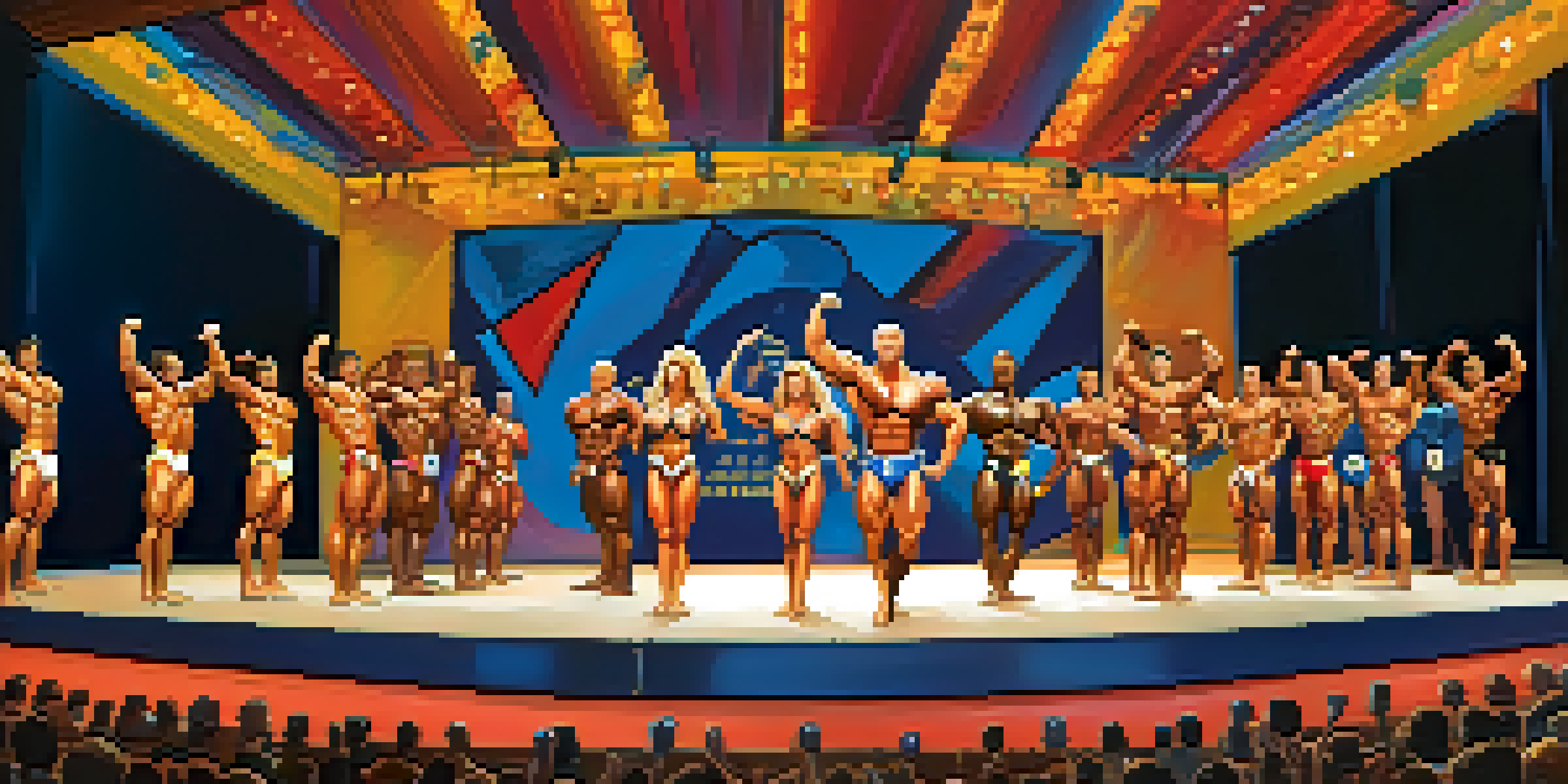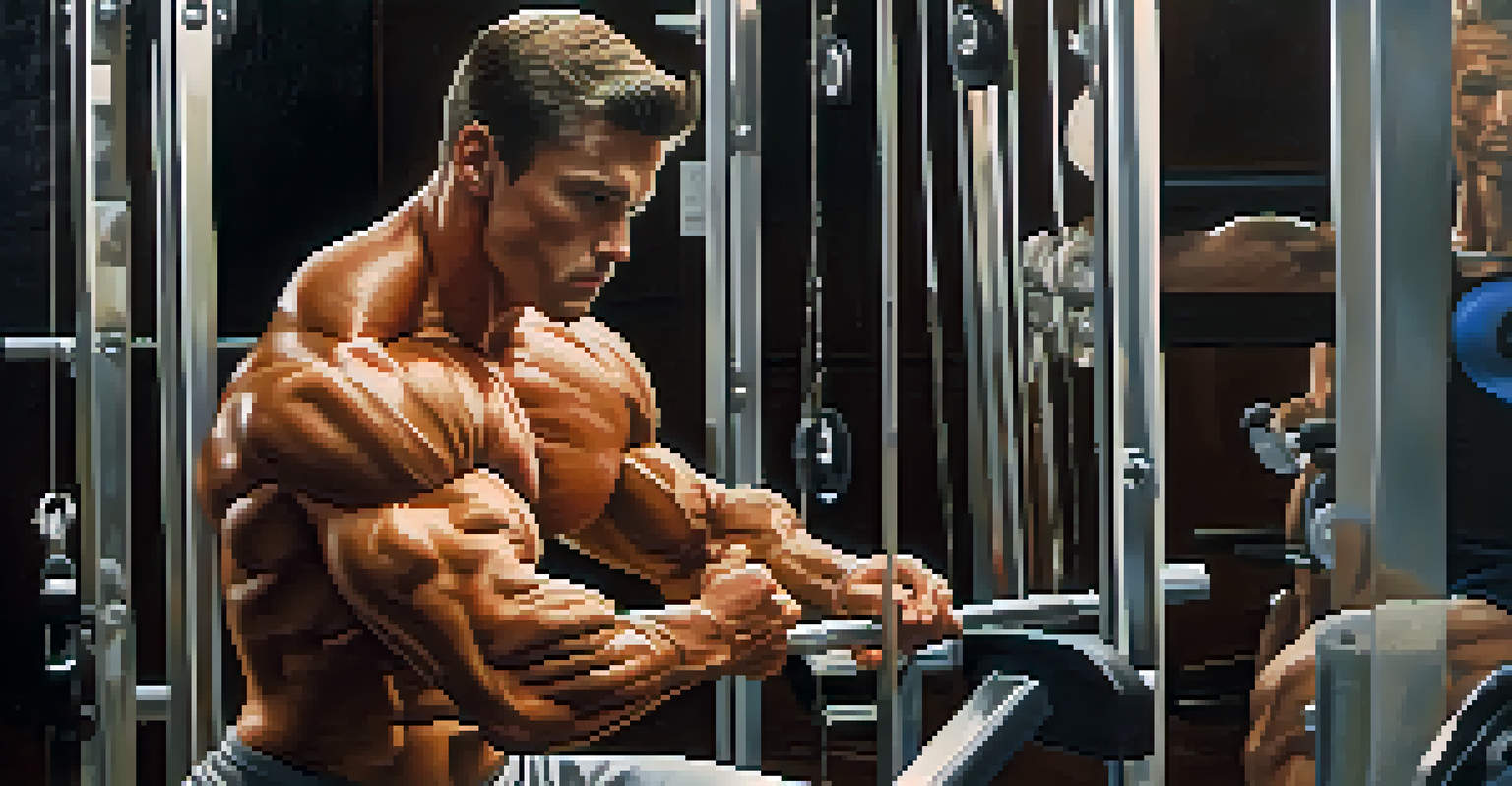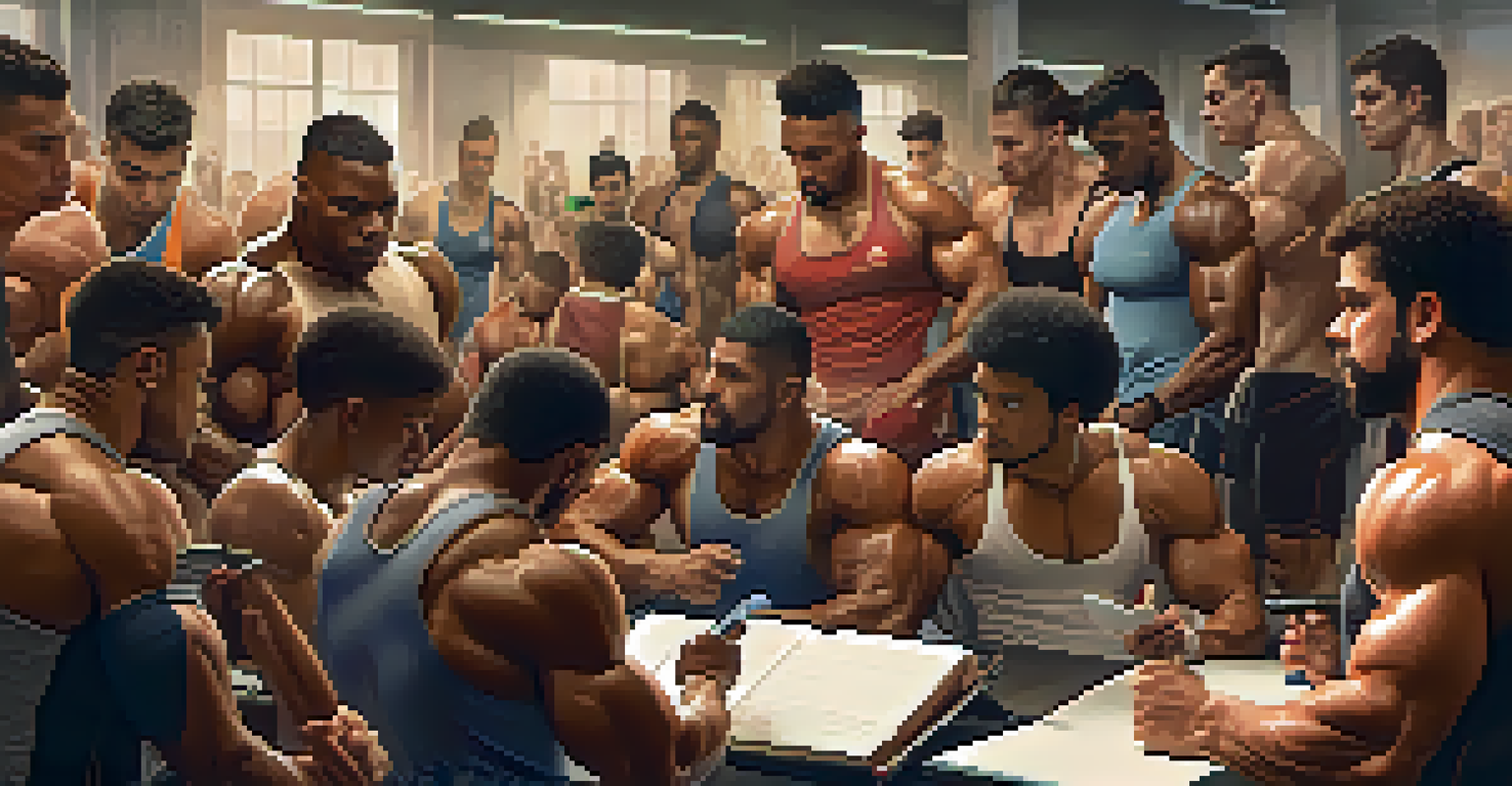A Complete Guide to Natural Bodybuilding Competition Rules

Understanding Natural Bodybuilding Competitions
Natural bodybuilding competitions celebrate athletes who build muscle without the use of performance-enhancing drugs. These events focus on the integrity of the sport, ensuring that competitors achieve their physique through hard work, nutrition, and training. By participating in these competitions, athletes not only showcase their physical strength but also promote a healthy lifestyle.
The only way to prove that you are a good athlete is to stay clean and train hard.
Competitors are typically judged on their muscularity, symmetry, and overall presentation. Each organization may have its unique criteria, but the essence of natural bodybuilding remains the same: to recognize and reward those who achieve peak physical condition naturally. This inclusivity encourages more individuals to partake, making it a vibrant community.
In essence, natural bodybuilding competitions provide a platform for athletes to demonstrate their dedication and discipline. They promote values of hard work, ethical training practices, and provide a sense of camaraderie among participants. Whether a novice or a seasoned pro, understanding these competitions is crucial for anyone interested in entering the field.
Categories and Divisions in Competitions
Natural bodybuilding competitions usually feature various categories and divisions to accommodate different body types and experience levels. Common categories include Men's Bodybuilding, Women's Figure, and Men's Physique, each with its specific criteria. This diversity allows competitors to participate in an area that best showcases their strengths.

Divisions may also be categorized by weight class or age group, ensuring fair competition among participants. For instance, novice divisions often cater to first-time competitors, providing a more supportive environment. This structure not only enhances the overall experience but also encourages newcomers to step onto the stage.
Natural Bodybuilding Defined
Natural bodybuilding competitions emphasize drug-free athleticism, showcasing dedication and healthy lifestyle choices.
Understanding the different categories is essential for competitors to select the right one for their physique and experience level. By choosing the appropriate division, athletes can better align their goals and performance, increasing their chances of success. Knowing where you fit helps set realistic expectations and fosters a more enjoyable competition experience.
General Rules and Regulations Overview
Every natural bodybuilding competition has a set of general rules and regulations that participants must follow. These rules are designed to ensure fair play and consistency across all competitors. For instance, many organizations prohibit the use of anabolic steroids, growth hormones, and other performance enhancers, reinforcing the value of natural bodybuilding.
Success is the sum of small efforts, repeated day in and day out.
In addition to substance regulations, competitors are often expected to adhere to specific grooming and attire guidelines. This might include requirements for posing suits, hair grooming, and overall presentation. These standards help maintain a level of professionalism and aesthetic appeal during the competition.
Familiarizing oneself with the general rules is vital for any competitor. Not only does it prepare them for what to expect, but it also helps avoid any potential disqualifications. Following these guidelines reflects a competitor’s commitment to the sport and enhances the credibility of natural bodybuilding as a whole.
Posing Guidelines and Techniques
Posing is a critical aspect of natural bodybuilding competitions, as it allows athletes to showcase their hard-earned physique. Each competitor must perform a series of mandatory poses, such as the front double biceps and side chest. Mastering these poses not only highlights muscular development but also enhances symmetry and overall presentation.
In addition to mandatory poses, competitors often have the opportunity to present their own routines during the free posing segment. This is where creativity comes into play, allowing athletes to express their personality and style. A well-executed routine can leave a lasting impression on judges and the audience alike.
Categories Ensure Fair Competition
Various categories and divisions in competitions allow athletes to compete fairly based on their body type and experience level.
Practicing posing techniques is essential for any competitor looking to succeed. Investing time in front of a mirror or attending posing classes can significantly improve confidence and execution on stage. Ultimately, effective posing can be the difference between standing out and blending in during a competition.
Judging Criteria Explained
Judging criteria in natural bodybuilding competitions can vary by organization, but some common elements remain consistent across the board. Judges typically evaluate competitors based on muscularity, symmetry, conditioning, and overall presentation. Each of these factors plays a significant role in determining an athlete's final score.
Muscularity refers to the size and development of the muscles, while symmetry focuses on the balance of muscle groups on either side of the body. Conditioning evaluates how well-defined and toned the muscles appear, often influenced by body fat percentage. Together, these criteria help judges assess the overall quality of each competitor's physique.
Understanding the judging criteria is crucial for competitors as it allows them to tailor their training and preparation accordingly. By focusing on the aspects that judges prioritize, athletes can enhance their chances of success. Ultimately, clear knowledge of what judges look for can lead to more effective training and better competition outcomes.
Drug Testing Policies and Procedures
One of the hallmark principles of natural bodybuilding competitions is the commitment to drug testing. Most organizations implement strict drug testing policies to ensure that all competitors adhere to the rules of natural bodybuilding. This typically involves both pre-competition and random testing during events to maintain a level playing field.
Drug testing procedures may include urine tests, blood tests, or polygraph examinations, depending on the organization. These tests help to identify the use of banned substances and protect the integrity of the sport. Athletes who fail a drug test may face disqualification or suspension, emphasizing the importance of compliance.
Importance of Posing Techniques
Mastering posing techniques is crucial for competitors, as effective presentation can significantly impact judges' evaluations.
Being aware of drug testing policies is essential for any competitor. It not only reinforces the integrity of the sport but also encourages athletes to remain committed to natural practices. Competitors should approach their training and supplementation with caution, ensuring they maintain the authenticity that natural bodybuilding represents.
Preparing for Your First Competition
Preparing for your first natural bodybuilding competition can be both exciting and daunting. The journey typically begins with a well-structured training program, including strength training, cardiovascular workouts, and a balanced diet. This comprehensive approach helps athletes build muscle while reducing body fat to achieve that coveted stage-ready physique.
In addition to physical preparation, mental readiness is equally important. Visualization techniques, positive affirmations, and practicing posing can significantly boost confidence. Many competitors also find that working with a coach or joining a supportive community can provide valuable guidance and encouragement throughout the process.

Ultimately, preparation is key to having a successful first competition experience. By focusing on both physical and mental aspects, athletes can ensure they are not only ready to compete but also enjoy the journey. Remember, every competitor was once a beginner, and each experience contributes to personal growth and development.